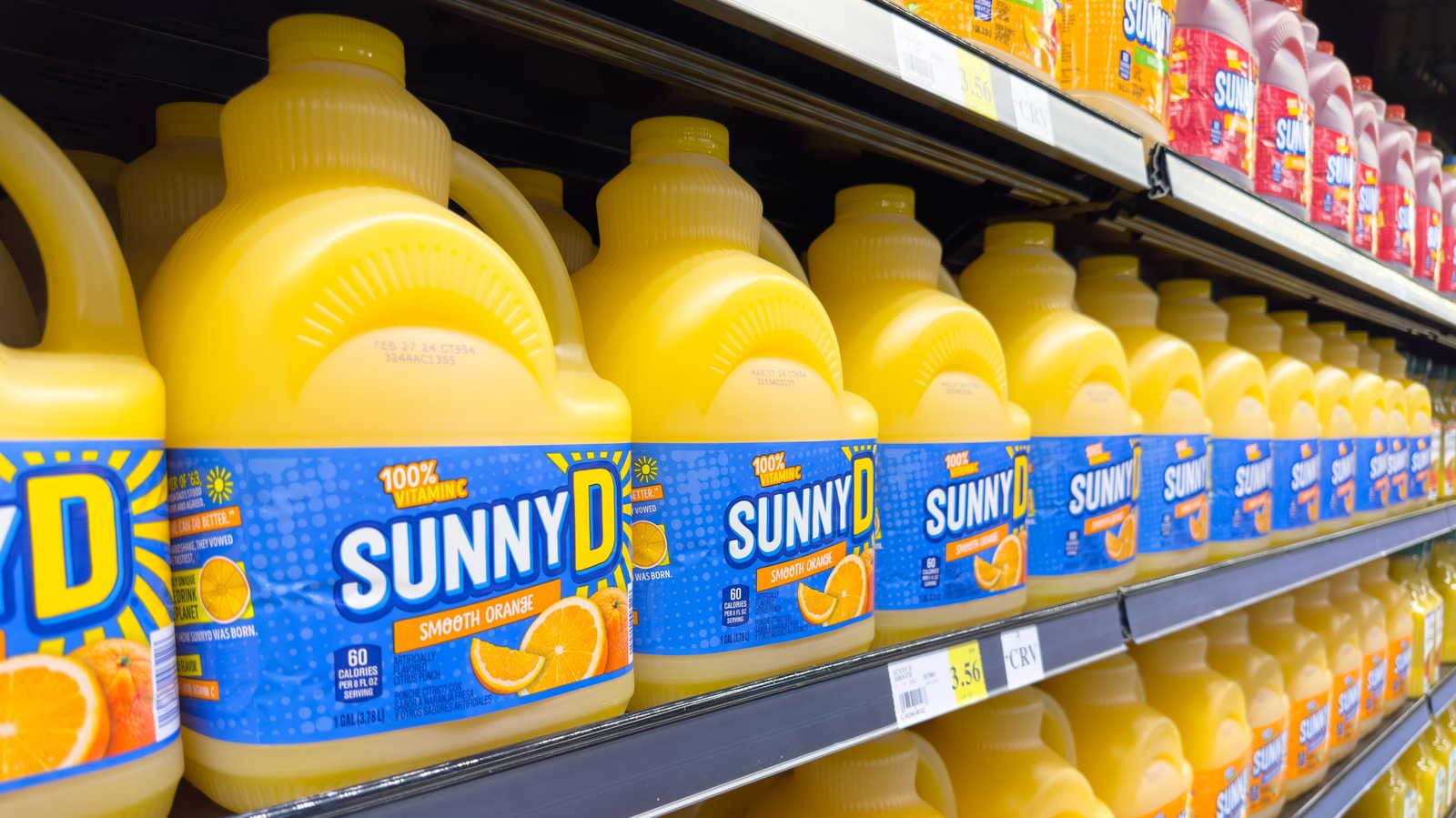Back when I was growing up, SunnyD was always touted as the healthy alternative to soft drinks like soda and . And even though it appears similar to , it's barely related — it's made primarily with water and high fructose corn syrup, with 2% or less concentrated orange juice, concentrated tangerine juice, concentrated apple juice, concentrated lime juice, concentrated grapefruit juice, and concentrated pear juice. Its name evokes vitamins, but even though it's called SunnyD, there's no vitamin D in it.
Instead, it has vitamin C in the form of added ascorbic acid. These days, the color of the drink comes from ingredients like Yellow 5 and Yellow 6, which are food-safe additives that give the drink its "sunny" hue, but back in the day, it used to be colored with beta-carotene, which is a red-orange pigment that occurs naturally in yellow and orange fruits and vegetables. Back in 1999, a controversy erupted over the drink when it was blamed for turning the skin of a four-year-old Welsh girl's face and hands orange.

This was a public relations nightmare for the company and tanked the beverage's sales. It seems highly unlikely that a drink can actually change the color of someone's skin, but it turns out that in large enough quantities, beta-carotene can in fact do this, and based on the quantity of SunnyD she was drinking, the beverage was probably the culprit. Large amounts of beta-carotene can change the way you look Wildly enough, beta-carotene is capable of changing your sk.























